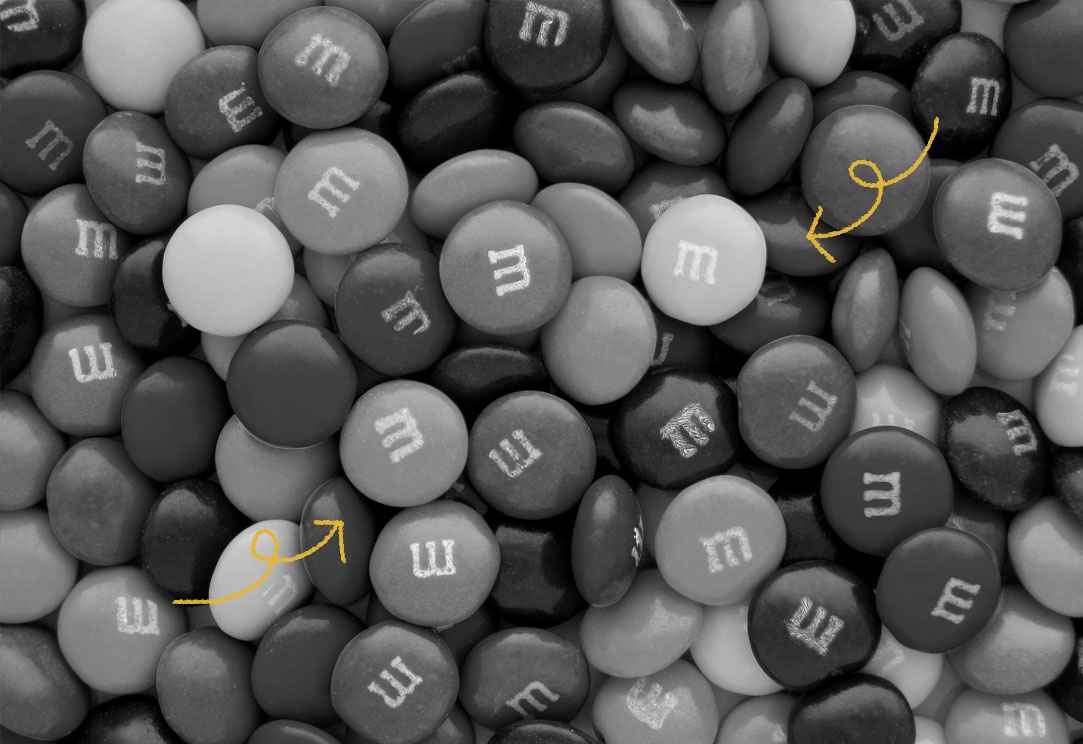Forrest E. Mars, Sr. moved to England in the 1930s after a falling out with his father. There, he witnessed British volunteers eating small chocolate beads encased in hard sugar shells during the Spanish Civil War and became inspired. When he returned to the U.S. in the 1940s, he made a deal with Bruce Murrie, the son of Hershey executive William Murrie. Mars sought to secure a steady supply of chocolate in anticipation of shortages due to World War II, which had already begun in Europe. In return for chocolate resources, Mars gave Murrie a 20% stake in the new candy. If you’ve ever wondered, M&Ms are named in honor of the two men who gave the candy its start: Mars and Murrie (M&M). In March 1941, Mars received a patent for his manufacturing process and M&Ms production began in Newark, New Jersey. M&Ms were originally sold in cardboard tubes and the coating colors were brown, red, orange, yellow, green, and violet. Once the United States entered the war, M&Ms were produced exclusively for the military and shipped overseas as part of soldiers’ rations. The coating kept the chocolates from melting, making them a perfect option, and they quickly became a favorite among the GIs. Once the soldiers returned home and the candy became available to the general public, M&Ms already had a devoted fanbase. Shortly after the war ended and general production began again, Mars bought out Murrie’s shares. In 1948, the brown bag packaging was introduced, and in 1950, the brand began printing a black “M” on the candies to differentiate their products from imitators. In 1954, they changed to a white “M” instead. That same year, Mars introduced Peanut M&Ms. In the 1970s, red M&Ms were temporarily unavailable, as there was concern that a red food dye called FD&C Red No. 2 was linked to health concerns; it was eventually banned in 1976. Although M&Ms did not use the dye, they removed the red M&Ms to avoid consumer confusion. In 1987, FD&C Red No. 2 was discovered to actually be safe and M&Ms reintroduced their red M&Ms as public concern over red dye faded. In 1981, M&Ms made history as the first candy to go to space when they were requested by the crew aboard NASA’s first space shuttle, Columbia. Today, M&Ms still have a massively devoted fanbase and are one of the most beloved, popular candies around.

Your go-to guide for weird history facts
Subscribe to the FREE daily email that makes learning about history fun.


